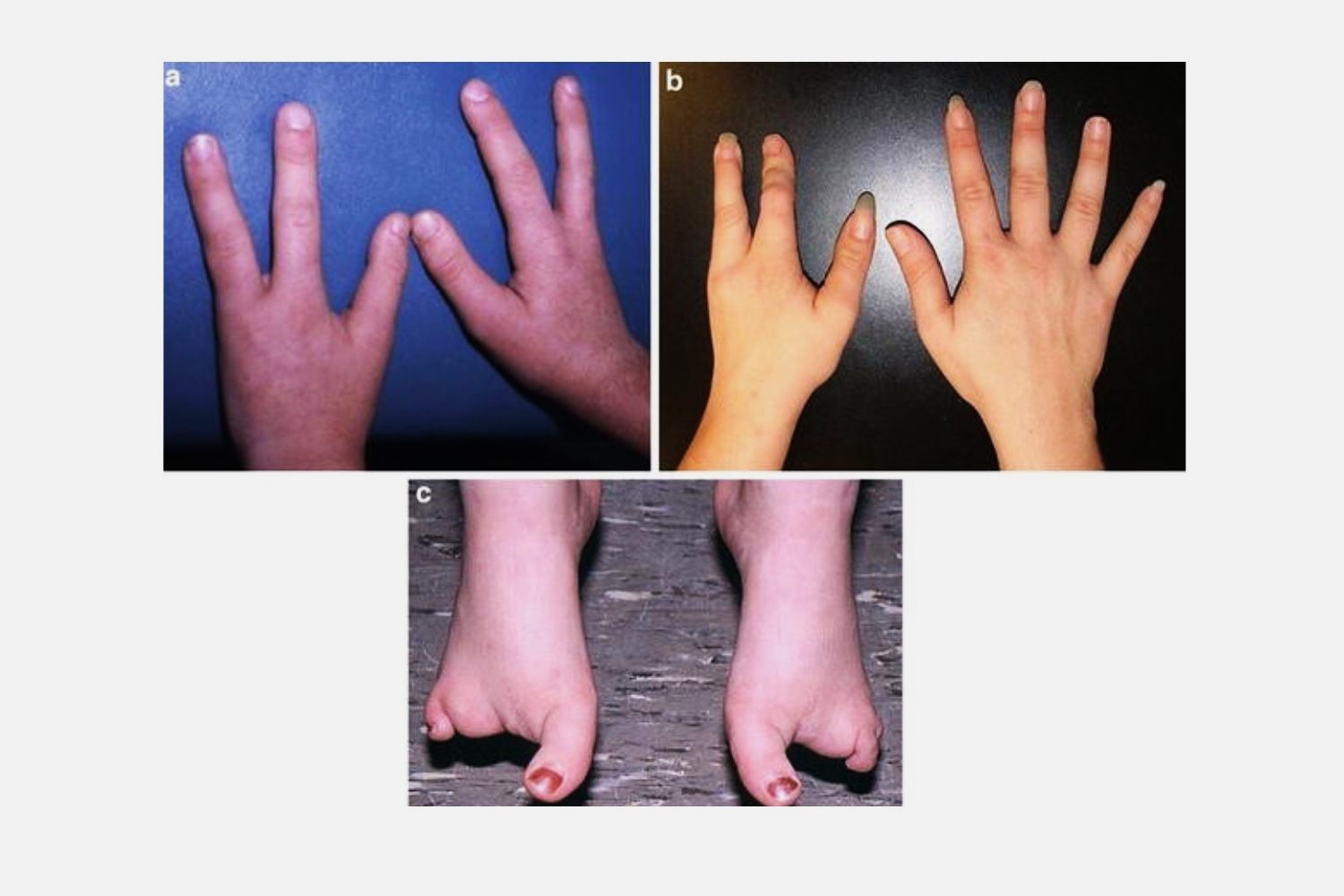
Monodactyly tetramelic is a rare condition where an individual has only one finger or toe on each limb. This intriguing anomaly can occur due to genetic mutations or developmental issues during pregnancy. Understanding monodactyly tetramelic helps us appreciate the diversity of human biology and the challenges faced by those living with it. People with this condition often adapt remarkably, finding unique ways to perform daily tasks. Learning about monodactyly tetramelic not only broadens our knowledge but also fosters empathy and inclusivity. Here are 25 fascinating facts about this rare condition that will shed light on its complexities and the resilience of those affected.
Key Takeaways:
- Monodactyly Tetramelic is a rare condition where individuals have only one digit on each limb. It can affect daily life, but with support and adaptations, people can lead fulfilling lives.
- Genetic mutations, hereditary factors, and environmental influences can cause Monodactyly Tetramelic. Research and advancements offer hope for better understanding and treatment options in the future.
What is Monodactyly Tetramelic?
Monodactyly Tetramelic is a rare congenital condition where individuals have only one digit on each limb. This condition can affect both the upper and lower limbs, leading to significant adaptations in daily life. Here are some fascinating facts about this unique condition.
Causes and Genetics
Understanding the origins of Monodactyly Tetramelic can provide insight into its rarity and complexity.
- Genetic Mutation: This condition often results from genetic mutations during fetal development.
- Hereditary Factors: It can be inherited, though cases of spontaneous mutation are also documented.
- Chromosomal Abnormalities: Sometimes linked to chromosomal abnormalities, which can affect limb development.
- Environmental Factors: Exposure to certain environmental factors during pregnancy may increase the risk.
Physical Characteristics
The physical traits of Monodactyly Tetramelic are distinct and can vary among individuals.
- Single Digit Limbs: Individuals have one digit per limb, which can be a thumb or a big toe.
- Symmetry: The condition typically affects all four limbs symmetrically.
- Limb Length: Limbs may be shorter than average, affecting overall height and reach.
- Joint Structure: Joints in the affected limbs might be less flexible or differently structured.
Daily Life and Adaptations
Living with Monodactyly Tetramelic requires unique adaptations and support.
- Assistive Devices: Many use specialized tools to aid in daily tasks.
- Physical Therapy: Regular therapy helps improve mobility and strength.
- Custom Clothing: Clothing often needs to be tailored for comfort and functionality.
- Driving Modifications: Vehicles can be modified to accommodate their needs.
Medical and Surgical Interventions
Medical advancements have provided various options for those with Monodactyly Tetramelic.
- Prosthetics: Custom prosthetics can enhance functionality.
- Surgical Options: Some may undergo surgery to improve limb use or appearance.
- Pain Management: Chronic pain can be managed through medication and therapy.
- Regular Check-ups: Frequent medical check-ups are essential to monitor health.
Psychological and Social Aspects
The psychological and social impact of Monodactyly Tetramelic is significant.
- Support Groups: Many find solace in connecting with others who have similar conditions.
- Mental Health: Access to mental health services is crucial for coping with challenges.
- Public Awareness: Increasing public awareness helps reduce stigma and discrimination.
- Educational Support: Schools often provide additional resources to support learning.
Historical and Cultural Perspectives
Monodactyly Tetramelic has been documented throughout history and across cultures.
- Historical Records: Ancient texts and artifacts depict individuals with similar conditions.
- Cultural Beliefs: Different cultures have various beliefs and myths surrounding congenital conditions.
- Famous Figures: Some historical figures with limb differences have made significant contributions to society.
- Art and Literature: The condition has been represented in art and literature, reflecting societal views.
Future Research and Developments
Ongoing research continues to improve understanding and treatment of Monodactyly Tetramelic.
- Genetic Research: Advances in genetic research may lead to better prevention and treatment options.
Final Thoughts on Monodactyly Tetramelic
Monodactyly tetramelic, a rare condition where individuals have only one digit on each limb, offers a unique glimpse into human diversity. Understanding this condition helps foster empathy and awareness about the challenges faced by those living with it. While it’s rare, advancements in medical science and prosthetics provide hope and improved quality of life for affected individuals.
Learning about such conditions broadens our perspective on human biology and resilience. It’s essential to support research and initiatives that aim to improve the lives of those with monodactyly tetramelic. By doing so, we contribute to a more inclusive and understanding society.
Remember, every fact we learn brings us closer to appreciating the vast spectrum of human experiences. Keep exploring, stay curious, and never stop learning.
Frequently Asked Questions
Was this page helpful?
Our commitment to delivering trustworthy and engaging content is at the heart of what we do. Each fact on our site is contributed by real users like you, bringing a wealth of diverse insights and information. To ensure the highest standards of accuracy and reliability, our dedicated editors meticulously review each submission. This process guarantees that the facts we share are not only fascinating but also credible. Trust in our commitment to quality and authenticity as you explore and learn with us.
